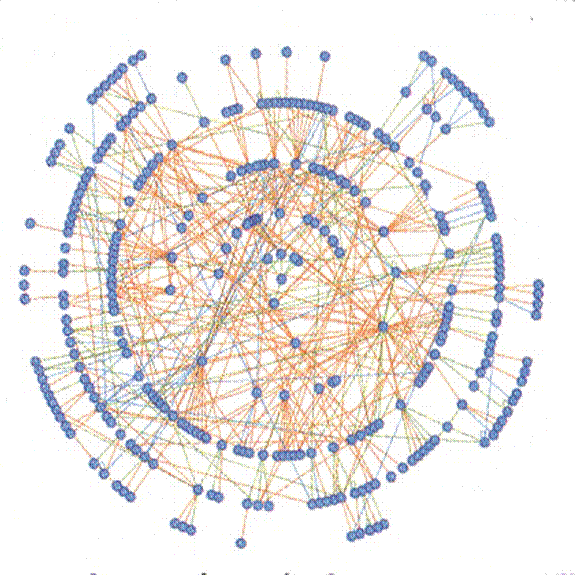
Early embryo protein interactions in Caenorhabditis elegans from Be My Partner, SCIENCE vol. 321 no. 5892 August 22, 2008 page 1020 reporting work by Boxem et al, Cell 134, 534 (2008)
Genes are Tuned to Each Other:
We have asserted that the fine tuning of genes is assured and that the notion that incremental steps in detuning may be about the same size is plausible even in the absence of the program and its results. But are they tuned to each other. Regions of DNA interact; that is clear because that is what regulation is. In fact in my mind, the fine tuning and the fine detuning are like boy scouts out with their flags doing semaphore practice. There is a signal man and one or more observers, and they must all be on the same page or the signal is degraded.
It is in fact not so simple. The proteins that the genes code for are very rich
in their interactions. Here is an example.

Early embryo protein interactions in Caenorhabditis elegans from Be My Partner, SCIENCE vol. 321 no. 5892 August 22, 2008 page 1020 reporting work by Boxem et al, Cell 134, 534 (2008)
Here is another.

A protein-protein interaction network from Allesandro Vespignani, Evolution Thinks Modular NATURE GENETICS vol. 35 no. 2 October 2003 page 118 courtesy of Gary Bader (Memorial Sloan-Kettering Cancer Center;
When I first started to set up a model to demonstrate the relationship between population size and fertility, there were already some things I knew I would have to account for. Inbreeding should be lethal. A big population should collapse after a predictable interval, the growth to population size curve should be concave upward, and it should level off below replacement.
Each of those principles was already established by an enormous amount of data, so if I could not reproduce them, I would have failed. In the effort to make it work I had three variables, the recessive lethal mutation rate, the detuning mutation rate and the detuning impact. So I had four results to wring out of three variables. I didn’t have much choice about what the parameters I chose was. Of course I was surprised later to find how many other things that I had not initially considered actually proved to be accounted for by my model.
One of the things that surprised me was how small the impact was. It was a few percentage points of one offspring. I would have guessed that such a small change would have been trivial and would have vanished into the stochastic chatter.
But now a glance at those networks shows that we should have expected it. There are so many interactions among those proteins, that the regulation steps must be excruciatingly small, and there must be a host of regulating systems, in order to tweak it all up so that it works.
There have been 284 visitors so far.